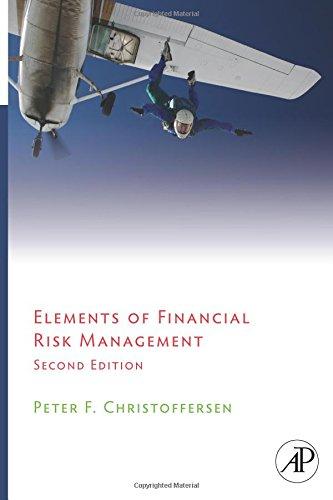Question
As a financial to analyst, you must evaluate a proposed project to produce printer cartridges. The equipment would cost $55,000, plus $10,000 for installation. annual
As a financial to analyst, you must evaluate a proposed project to produce printer cartridges. The equipment would cost $55,000, plus $10,000 for installation. annual sales would be 4,000 units at a price of $50 per cartridge, and the project's life would be 3 years. Current assets would increase by $5,000 and payables by $3,000. at the end of 3 years, the equuipment could be sold for $10,000. Depreciation would be based on the MACRS 3-year class; so the applicable depreciation rates would be 33%, 45%, 15%, and 7%. Variable costs (VC) would be 70% of sales revenues, fixed costs excluding depreciation would be $30,000 per year, the marginal tax rate is 40%, and the corporate WACC is 11%.
a. What is the required investment, that is, the Year 0 project cash flow?
b. What are the annual depreciation charges?
c. What are the project's annual net cash flows?
d. If the project is of average risk, what is the NPV? Should it be accepted?
e. Suppose management is uncertain about the exact unit sales. What would be the project's NPV be if unit sales turned out to be 20% below forecast but other inputs were as forecasted? Would this change the decision? Explain.
f. The CFO asks you do a scenario analysis using these inputs;
1. Operating cash flows rather than accounting income are listed in Table 12-1. Why do we focus on cash flows as opposed to net income in capital budfeting?
2. Explain why sunk costs should not be included in a capiatal budgeting analysis but opportunity costs and externalities should be included. Give an example of each.
3. Explain why working capital is included in a capital budgetin analysis and how it is recoved at the end's of project's life.
4. Why are interest charges not deducted when a project's cash flows to use in a capital budgeting analysis are calculated?
5. Most firms generate cash inflows every day, not just once at the end of the year. In capital budgeting, should we recognize this fact by estimating daily project cash flows and then using them in the analysis? If we do not, are our results baiased? If so, would the NPV be biased up or down? Explain.
6. What are some differences in the analysis for a replacement project versus that for a new expansion project?
7. Distinguish among beta (or market) risk, within-firm (or corporate), risk, and stand-alone risk for a project being considered for inclusion in a firm's capital budget.
8. In theory, market risk should be the only "relevant" risk. However, companies focus as much on stand-alone risk as a market risk. What are the reasons for the focus on a stand-alone risk? two projects
9. Define (a) sensitivity analysis, (b) scenario analysis, and (c) simulation analysis. If GE was considering two projects (one for $500 million to develop a sattelite communications system and the other for a $30,000 nwe truck) on which project would be company be more likely to use a simualtion analysis?
Step by Step Solution
There are 3 Steps involved in it
Step: 1

Get Instant Access to Expert-Tailored Solutions
See step-by-step solutions with expert insights and AI powered tools for academic success
Step: 2

Step: 3

Ace Your Homework with AI
Get the answers you need in no time with our AI-driven, step-by-step assistance
Get Started


